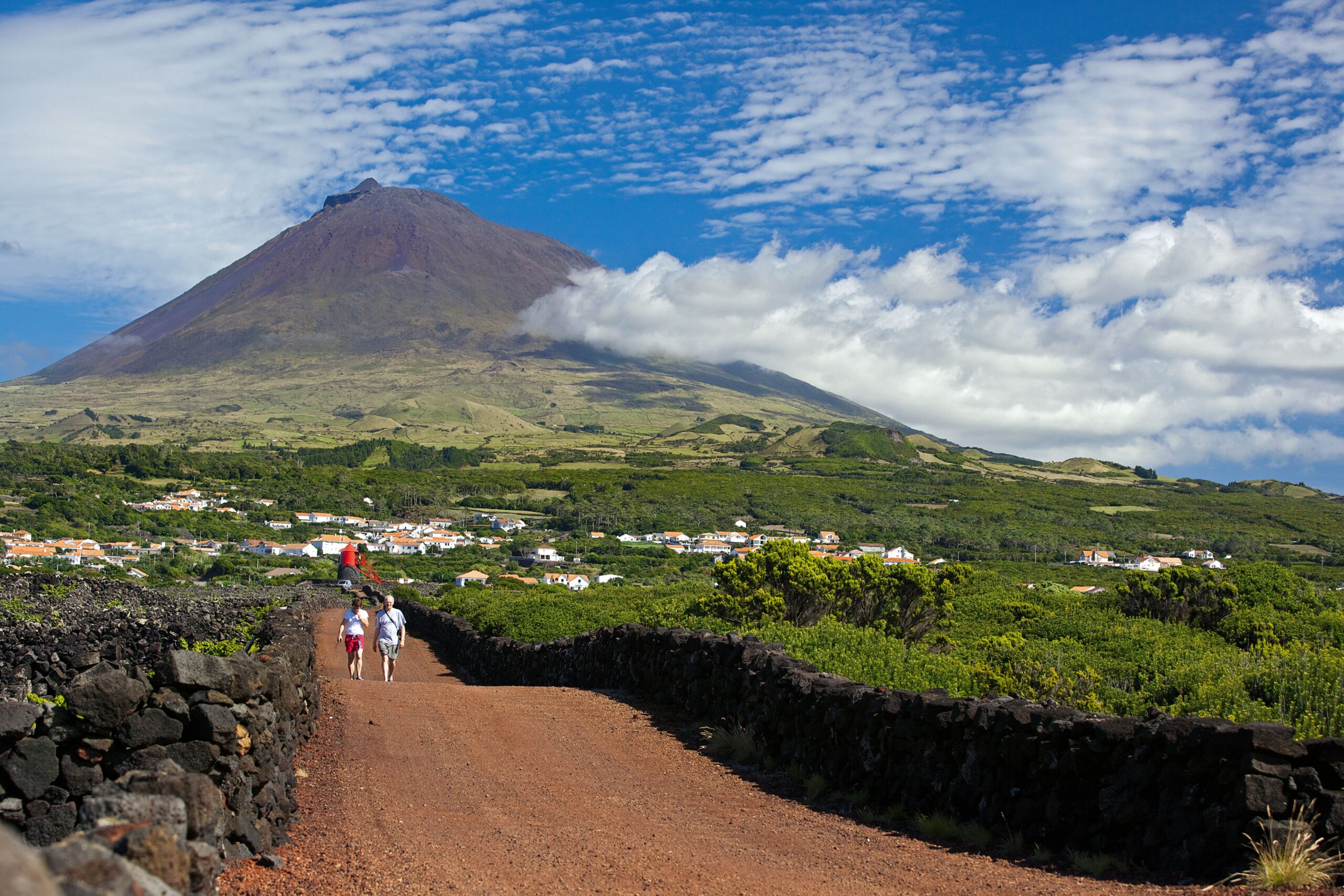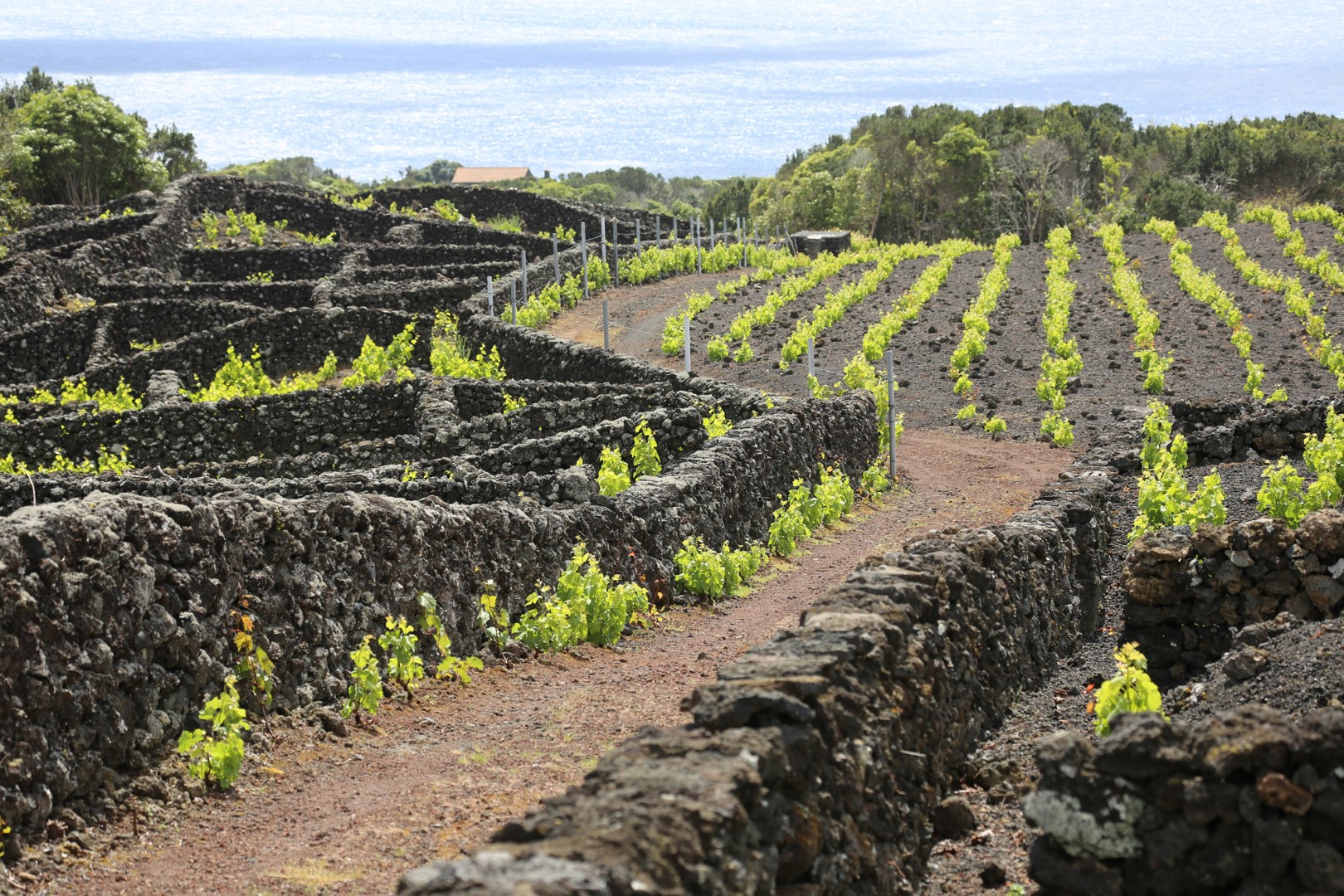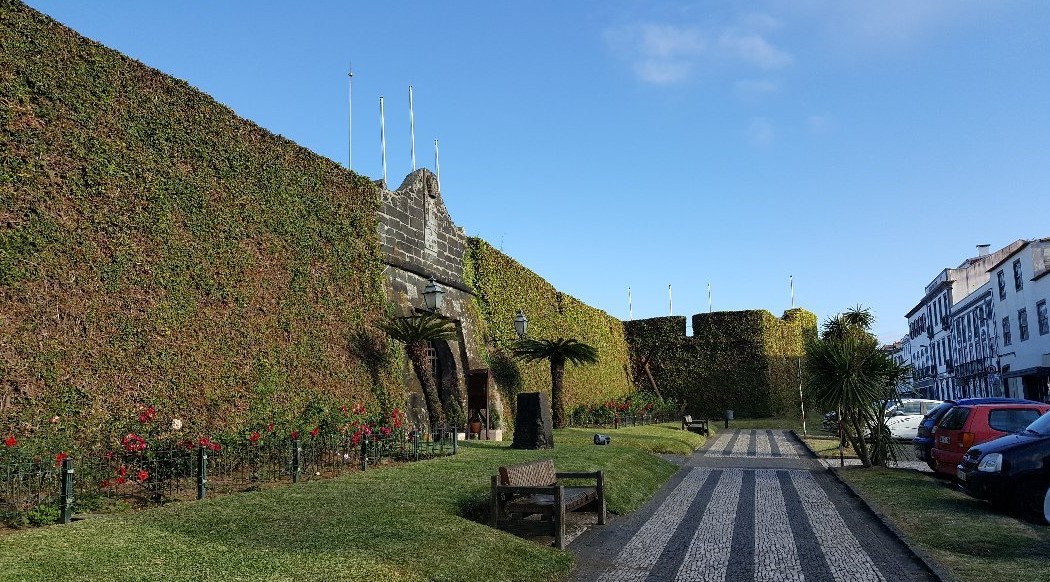John Gouldsmith visited the Azores with us this summer, exploring Sao Miguel, Terceira, Sao Jorge, Pico and Faial on an island-hopping holiday with friends Charles Kliner and Sheila Snowden. For John, this was also a journey into the past, following in the 200-year-old footsteps of another John Gouldsmith…

My sketch impression of the Harbour at Horta in 1811 ~ The calm after the storm
I had many reasons to want to go to the Azores, and one of them was that some years ago I discovered that one of my Ancestors, and namesake, an earlier John Gouldsmith, was onboard a ship that had to put into Fayal after a bad storm in 1811.
The English wrote Faial as Fayal back in the day, the harbour at Horta on Faial being a natural shelter from bad weather. The natural shelter apparently provided by the promontory of Monte Queimado and Monte da Guia together and the relatively shallow depths providing good anchorage.
The Lloyd’s Marine List published in London at the end of April 1811 reported:
“The Ocean, Scott, from Buenos Ayres to London, is put into Fayal in distress and part of her Cargo thrown overboard”
Other records record the storm as “tempestuous”.
The Ocean was an armed merchant ship [10 guns] of 481 tons. From documents from a court case I had found in the National Archives at Kew in London I knew that my ancestor was the Mate, second in command, of the ship. Remarkably the court case documents include a very detailed account of the voyage including; the crew list, disbursements and expenses, exchange rates, at each port, cargo, people carried and the voyage as a whole.
The Disbursements [expenses] listed at Faial appear to be dated between 29 March and 26 May 1811 so I assume the ship put into Faial on March 29 or a day or two before that.
Examples of the 43 lines of disbursements and expenses include:
“To Harbour Master mooring and unmooring ship 59 500”
“Corn brandy for sailors and labourers 208 750”
“To beef 551 800 To 5 sheep 13 000 564 800”
“To foretopmast and cordage for do [ditto] 80 600”
“To deal board and plank for repairs 34 580”
“To Blacksmiths account 31 250”
“To Calkers account 62 460 Carpenters 48 000 110 460”
“To cabin window repaired 6 220”
“To Custom House charges 24 800”
They give a pretty good idea of the extents of repairs needed, stores and victuals taken on, fees and harbour costs and other expenses incurred. The exchange rate was stated as “5 s 7 1/2 d”. The total of 5916 mil 950 reis [Portuguese Reals] equated to £1664 2s 10d.
They were on the return trip from Buenos Ayres, having been to Cadiz, Gibraltar, and Rio de Janeiro during the journey out. They took a passenger from Buenos Ayres who left the ship at Faial and at least two of the crew left the ship at Faial. Two men joined the crew at Faial who may have been brothers, possibly John and Joseph Silvers, but it is hard to decipher from the record. They may have been Portuguese or another nationality.
Knowing all this information and other information about the ship I was able to imagine and prepare a sketch impression whilst there of how the harbour may have looked back in 1811 [e.g. omitting the harbour wall built in the late 1800’s]. I intend to develop an illustration for the account of the whole voyage I am writing, including the further information I now have.

The Master of the Ocean took some ‘Fayal’ wine back with him to London! I now know that although called Fayal wine, as exported by the merchants of Faial, the grapes were grown and wine was produced on Pico [the wine growing area is now a UN World Heritage Site] the island twenty minutes away by modern ferry [which can be seen with the volcanic cone of Pico mountain in my sketch]. Back in the day surely a hard journey by row boat or even by sail a potentially precarious crossing that could only be made in favourable conditions.

As found, the harbour at Horta still provides a welcoming mid-Atlantic shelter and staging point for sailing boats of numerous nations and the harbour walls are brightly and colourfully decorated with the names and emblems of boats that have made a successful crossing.

My sketch of a Look Out Post at the Pousada Forte de Horta at the harbour ~ history still waits!
It was wonderful to be able to visit and see a place where my ancestor had been, especially after the as imagined extremely frightening experience of the storm, where he and his companions had gained shelter after the tempest and refuge whilst making repairs to their ship.

I was able to see buildings that have survived extant or that would have existed in some form in 1811, perhaps now modified or rebuilt, restored, after earthquakes or the passage of time, on both Faial and Pico. For example, the Forte de Horta one of the town’s fortifications now a Hotel, the church of Nossa Senhora das Angústais [and other churches and monasteries] and a warehouse dated 1805 on the coast of Pico, surely used in the wine trade in some way. Which all helps refine and colour my search for history, provide more of the elaborate historical jigsaw picture.
I found some more pieces of useful information whilst in Horta and have found more leads and clues to further possible sources of information, the people at the Biblioteca Pública e Arquivo Regional João José da Graça in Horta have been very helpful with this.
Archipelago Choice Azores specialists
We specialise in tailor-made holidays to the nine islands of the Azores. Call now on 017687 721020 to begin planning your personalised trip.

